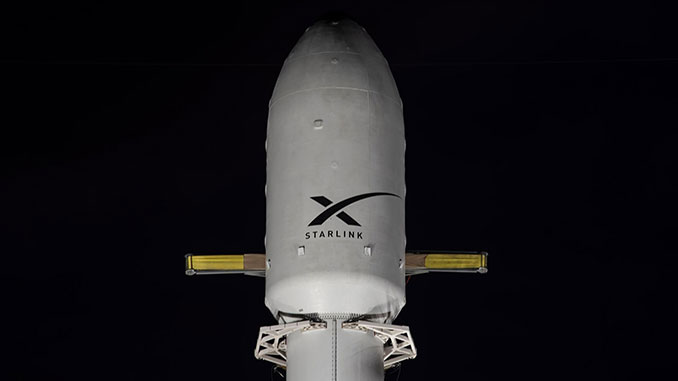

Update 6:44 p.m. EST (2344 UTC): SpaceX confirms deployment of the Starlink satellites.
SpaceX launched its latest batch of Starlink satellites from Vandenberg Space Force Base Friday afternoon. It came as the U.S. Space Force’s Assured Access to Space (AATS) continues work to ensure resiliency from its two primary spaceports that’s seeing far more orbital launches than it has historically experienced.
Liftoff of the Falcon 9 rocket on the Starlink 11-2 mission from Space Launch Complex 4 East (SLC-4E) happened at 1:55 p.m. PST (4:55 p.m. EST, 2155 UTC). This was the 87th Starlink launch so far this year.
The Falcon 9 first stage booster supporting this mission, tail number B1082 in the SpaceX fleet, made its ninth trip to space. It previously launched USSF-62, OneWeb Launch 20 and six previous Starlink missions.
A little more than eight minutes after liftoff, B1082 touched down on the SpaceX droneship, ‘Of Course I Still Love You.’ This marked the 113th booster landing for OCISLY and the 382nd booster landing to date.
Shoring up launch capability
The Falcon 9 launch came on the heels of the conclusion of the Space Force Association’s second annual Spacepower Conference in Orlando, Florida. The gathering of Guardians, contractors and academics covered a range of topics from preparing to combat current and future threats to on-orbit assets to various acquisition strategies for desired space-related capabilities.
Among the panels throughout the three days was a keynote address from Brig. Gen. Kristin Panzenhagen, the Program Executive Officer (PEO) for Assured Access to Space (AATS) for the U.S. Space Force’s Space Systems Command (SSC). She also serves as the Commander of Space Launch Delta (SLD) 45, the Director of the Eastern Range and the Director of Launch and Range Operations for SSC.

Speaking to the convention on Thursday in her AATS PEO role, Panzenhagen said that so far this year, the Space Force has supported 136 mission between Cape Canaveral and Vandenberg.
“Just to give you an idea of the pace that we’re launching at, with today being December 12, we’ll probably have at least eight more launches before the end of this calendar year,” Panzenhagen said. “Now let’s compare. Globally, in that same time period, calendar year 2024, there’s been about 230 launches. So, the Space Force is providing launch capacity at its spaceports for about 60 percent of the global missions.
“So, most of the launches in the world are happening in at the Space Force’s spaceports and about 40 percent of the global missions are just from the Eastern Range, which is amazing.”
Panzenhagen said that as part of the organization’s “spaceport of the future” work, it has about $1.3 billion to use from FY2024 through FY2028 to upgrade launch infrastructure at both the Eastern Range and the Western Range.
She said in order to support boosting launch capacity and increasing resilience at their spaceports, AATS is working to “eliminate critical days.”
“For us, ‘critical days’ are days when you’re doing something maintenance-wise that puts too much risk to be able to do a launch mission. So, like you’re digging and could potentially cut fiber or something like that,” Panzenhagen explained. “We’re working on eliminating those.”
She said other steps are being taken, like burying power lines, increasing reliable access to water for things like deluge systems, expanding roadways to detract from traffic backups related to moving launch hardware and more. Panzenhagen said they have 192 such infrastructure projects over those named fiscal years and so far, they are on track.
Back in view
The Starlink 11-2 mission is also notable in that it returned to what the public has grown accustomed to seeing from SpaceX in most other launches: a launch livestream that’s advertised prior to liftoff.
Beginning with the Starlink 9-13 mission on Nov. 24, SpaceX decided to proceed into the launch of its Falcon 9 rockets from Vandenberg without prior notice on its X account (formerly Twitter) or posting a link to watch the final five minutes of the countdown and stepping into liftoff.
Instead, it would suddenly publish a launch livestream anywhere from 44 seconds to more than a minute following liftoff from SLC-4E. The Starlink 11-2 is the first West Coast mission since Starlink 9-12 to include a “Watch” button on its launch page.
SpaceX didn’t provide a public reason for the change nor a reason for shifting back to what the public was accustomed to seeing.







